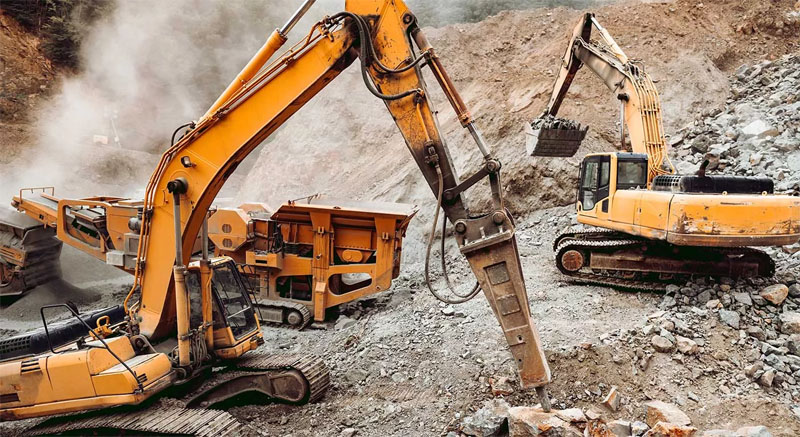From Principle to Conclusion: The Process of Interior Demolition Explained
From Principle to Conclusion: The Process of Interior Demolition Explained
Blog Article
The Ultimate Guide to Interior Demolition Techniques and Equipments
Within the world of indoor renovations, the art of demolition is an essential stage that requires accuracy, ability, and the right set of tools. Whether you are a skilled specialist or a DIY enthusiast, recognizing the intricacies of interior demolition methods can make all the distinction in attaining an effective task end result.
Vital Interior Demolition Devices
When embarking on indoor demolition jobs, having the ideal devices is crucial for performance and safety. Among the most crucial devices for indoor demolition is the demolition hammer. This sturdy tool is made to damage through challenging materials like concrete, drywall, and tile. Its powerful hammering activity can quickly knock down walls, floorings, and other frameworks. In addition, a pry bar is vital for getting rid of components, trim, and other materials. Its take advantage of enables the easy extraction of nails and various other fasteners without harming the surrounding surfaces - interior demolition.
An additional important device is a reciprocating saw, which is ideal for cutting via a variety of products such as plastic, metal, and wood. Its capability to make precise cuts in tight areas makes it suitable for demolition job. Additionally, an utility blade is required for reducing materials like rug, vinyl floor covering, and insulation. Its sharp blade ensures accurate and tidy cuts, assisting in the elimination of undesirable products. In general, having these crucial interior demolition devices will significantly enhance the performance and security of any kind of demolition task.

Security Safety Measures During Demolition

Furthermore, all employees involved in the demolition process must receive ample training on the correct handling of devices and equipment to minimize mishaps. By adhering to these security preventative measures, indoor demolition jobs can be brought out efficiently while prioritizing the health of all people involved.
Techniques for Getting Rid Of Wall Surfaces
Applying correct safety preventative measures throughout interior demolition tasks is critical for developing a safe and secure workplace, and one vital element of such tasks includes understanding methods for removing wall surfaces. One commonly used method is hands-on demolition, which requires making use of basic hand tools such as sledgehammers, crowbars, and utility knives to thoroughly dismantle the wall surface item by item. This method enables higher control over the demolition procedure, particularly in delicate areas where precision is crucial.
For bigger, more intricate wall surfaces, mechanical demolition may be needed. This involves utilizing hefty equipment like excavators or excavators to knock down wall surfaces successfully. It is crucial to make certain that the architectural stability of the structure is not compromised redirected here during mechanical demolition.
Another technique for removing walls is deconstruction, where the wall surface is taken apart in a manner that preserves multiple-use materials. This sustainable technique is ecologically friendly and can additionally help in reducing disposal prices. Whichever technique is used, it is important to follow correct safety methods and consider the architectural effects of wall elimination to ensure a successful indoor demolition project.
Removing Floor Covering Like a Pro
Effectively getting rid of floor covering throughout interior demolition calls for the appropriate tools and strategies to ensure a smooth and effective procedure. The very first step in eliminating flooring is to get rid of the area of any kind of furnishings or barriers. Next, recognize the kind of flooring to figure out the ideal elimination method. For hardwood or laminate floor covering, beginning by removing the baseboards and after that use a floor covering scrape to lift and separate the planks. Carpet elimination involves cutting the rug into workable areas and rolling it up for disposal. For ceramic tile or vinyl flooring, a chisel or flooring scrape can be utilized to pry up the tiles or sheets. It's vital to wear protective equipment such as gloves, goggles, and a mask to stop injuries and direct exposure to dirt and particles. In addition, having a dumpster or designated disposal area prepared for the gotten rid of floor covering materials is important for keeping a clean workplace. By complying with these methods and using the right tools, eliminating floor covering like a pro can be attained successfully and properly.
Correct Garbage Disposal Approaches
After effectively eliminating floor covering making use of the appropriate tools and strategies, the next crucial step in the indoor demolition procedure is applying correct waste disposal methods. Appropriate waste disposal is essential for maintaining a risk-free and tidy work atmosphere during and after demolition.

Service providers should adhere to local regulations concerning garbage disposal to prevent fines and charges. Making use of expert waste management services can streamline the disposal process and make certain compliance with ecological guidelines. By executing proper waste disposal approaches, interior demolition projects can be finished effectively This Site and sustainably.
Final Thought
In conclusion, indoor demolition needs the usage of necessary devices and rigorous security precautions to guarantee a secure and successful procedure. By adhering to these guidelines, interior demolition can be completed efficiently and with minimal dangers.
One of the most crucial tools for interior demolition is the demolition hammer (interior demolition). On the whole, having these important interior demolition devices will dramatically boost the efficiency and security of any demolition project
Efficiently removing flooring during interior demolition requires the correct tools and methods to ensure a effective and smooth process.After efficiently removing floor covering making use of the ideal devices and methods, the next important step in the indoor demolition procedure is carrying out appropriate waste disposal methods.In verdict, indoor demolition requires the usage of essential devices and stringent security precautions to ensure a successful and secure procedure.
Report this page